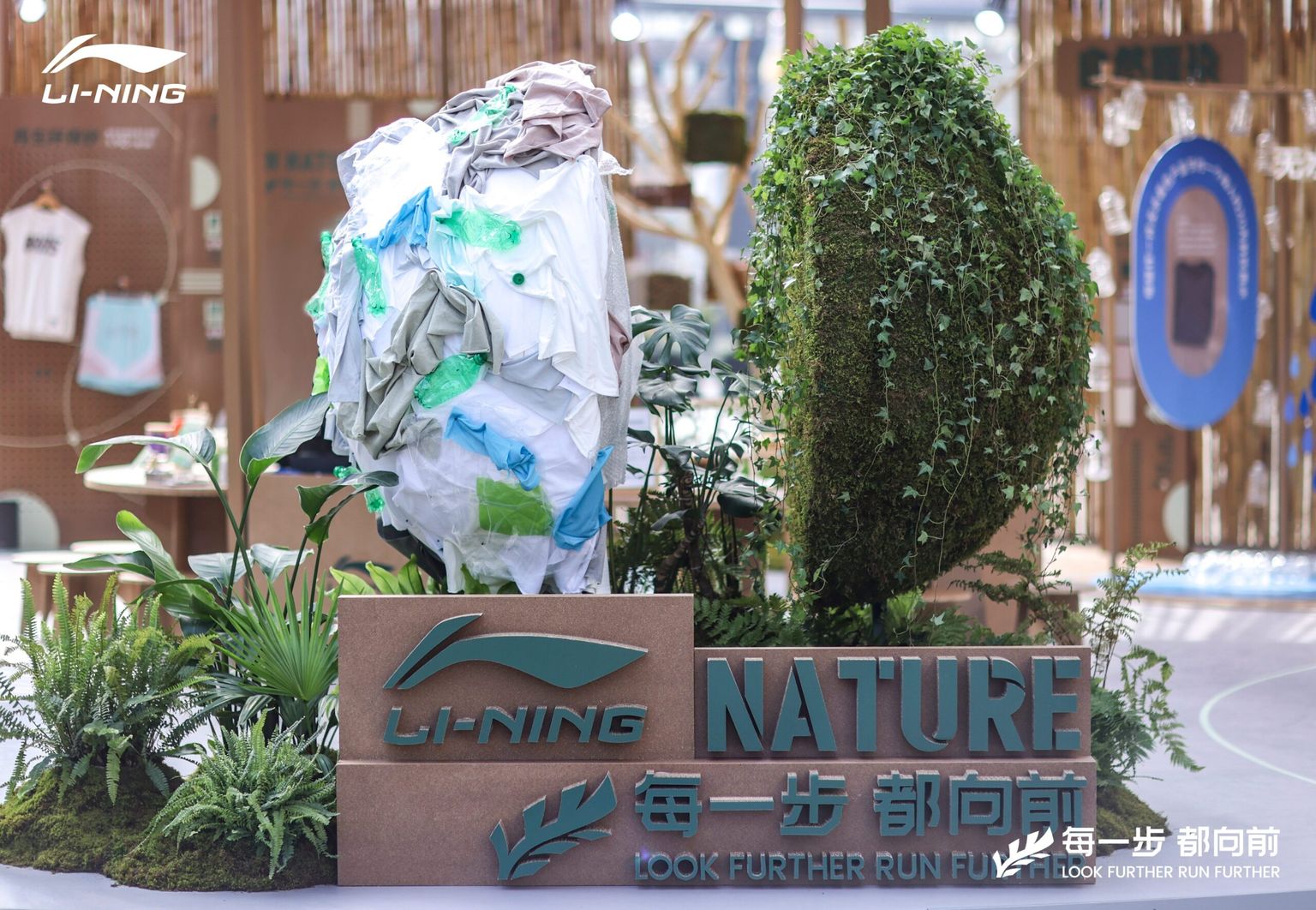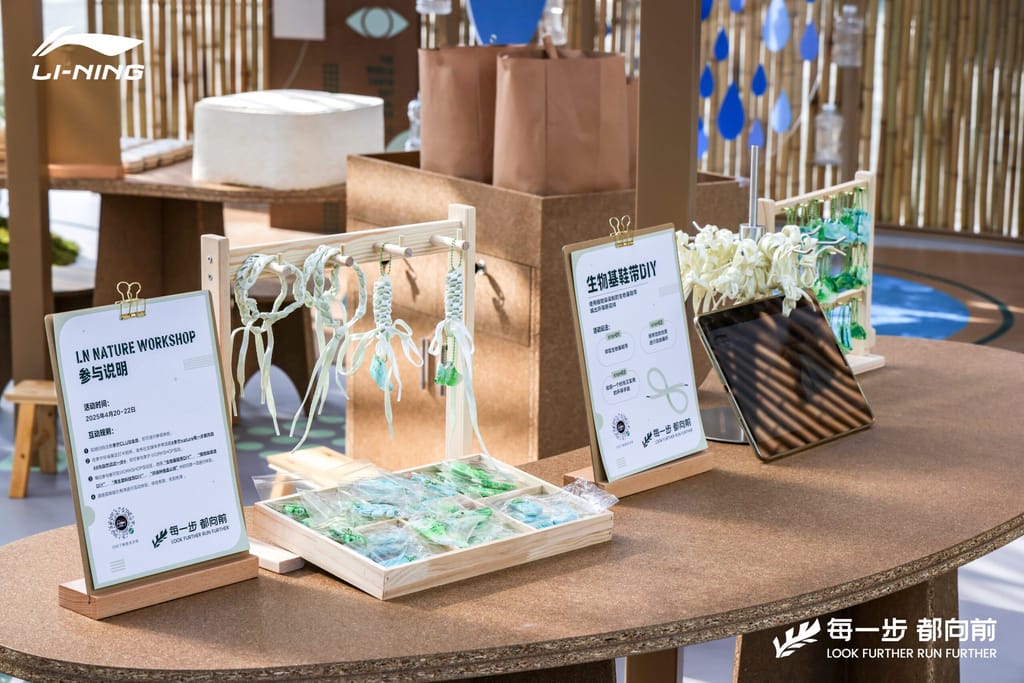Li Ning Moves Sustainability from Concept to Consumer Action
By
Wenzhuo Wu

Published on
April 28, 2025

As sustainability narratives mature in China’s fashion and sportswear market, brands face a pivotal question: how to move from preaching to participation. Li Ning’s recent “LN Nature” pop-up, staged at its store in Chengdu Taikoo Li from April 20 to 22, offers a sharp case study in meeting that challenge.
Timed to coincide with Earth Day, Li Ning’s activation did more than showcase eco-friendly products—it constructed an experiential “environmental theater” designed to dissolve the cognitive distance between green innovation and daily consumer behavior. Across four themed zones—From Nature, Naturally Dyed, Renewed by Nature, and Back to Nature—visitors encountered the full arc of Li Ning’s sustainable efforts, from bio-based materials to water-saving dye techniques and the brand’s first fully biodegradable sneaker.

Rather than defaulting to static displays, Li Ning opted for tactile, interactive storytelling. Installations like the “ecosystem cycle”—which tracked how a biodegradable shoe decomposes over 180 days—grounded abstract concepts in visible, relatable terms. Meanwhile, DIY workshops such as bio-based shoelace making and plant dye spraying encouraged attendees to perform small, symbolic acts of sustainability, reinforcing the brand’s ethos that “every step moves us forward.”
What sets this campaign apart is its deliberate lowering of the entry barrier to environmental engagement. By blending science-backed innovation with playful consumer touchpoints, Li Ning not only made sustainability approachable but positioned it as a natural extension of self-expression—a critical move at a time when China’s “green consumption” is shifting from passive awareness to active demand.
Importantly, the campaign’s architecture also reflects a broader strategic pivot. Instead of treating eco-consciousness as an ancillary brand value, Li Ning is weaving it into the value chain, from sourcing and manufacturing to end-of-life recycling. In doing so, it is tapping into rising consumer expectations for transparency and authenticity—particularly among younger urban audiences who are increasingly skeptical of “greenwashing.”
In the crowded sustainability conversation, many brands are content to signal. Li Ning’s Earth Day initiative suggests a more sophisticated approach: embedding sustainability within immersive retail storytelling, and in doing so, nudging consumers to see eco-actions not as obligations, but as choices that align naturally with their lifestyles.
In China’s fast-evolving eco-culture landscape, that distinction may prove decisive.












